Polio: memories of self-isolation in the 1950s
- Published
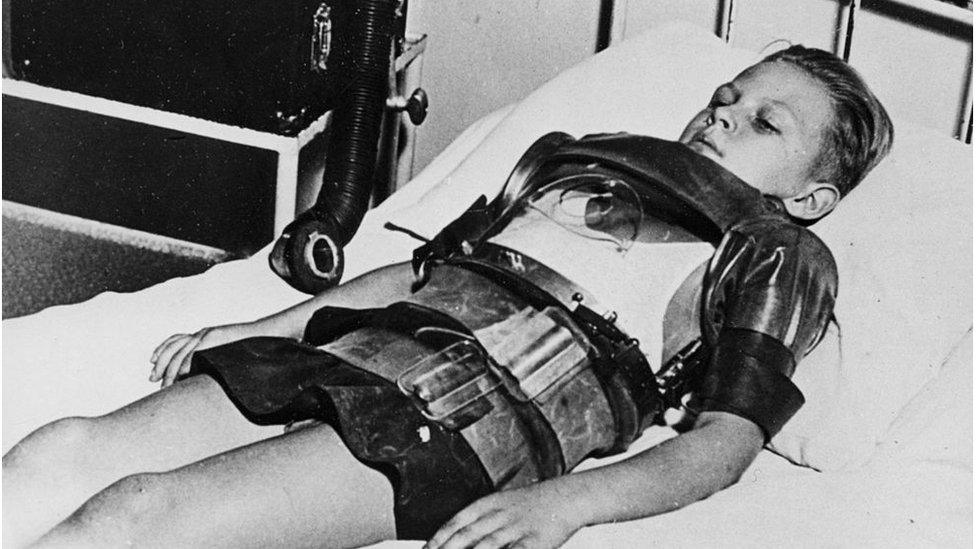
Polio often led to paralysis in young people and children
The children of Northern Ireland's 1957 polio epidemic are no strangers to isolation.
That year brought the worst ever outbreak of polio to these shores.
It's a cruel disease, often known as creeping paralysis and it targets children and teenagers.
Survivors were often left unable to walk or move their limbs.
In summer, it was rife and parents warned children to stay away from swimming pools and cinemas.
Old black and white pictures of rows and rows of children lying paralysed in huge iron lungs struck fear into every parent's heart.
The cure - a pink dot of a vaccine delivered to school children in a lump of sugar - would come too late for them.
In 1957, there were 297 cases of polio in Northern Ireland.
Eddie McCrory from Belfast got polio two days after his fifth birthday.
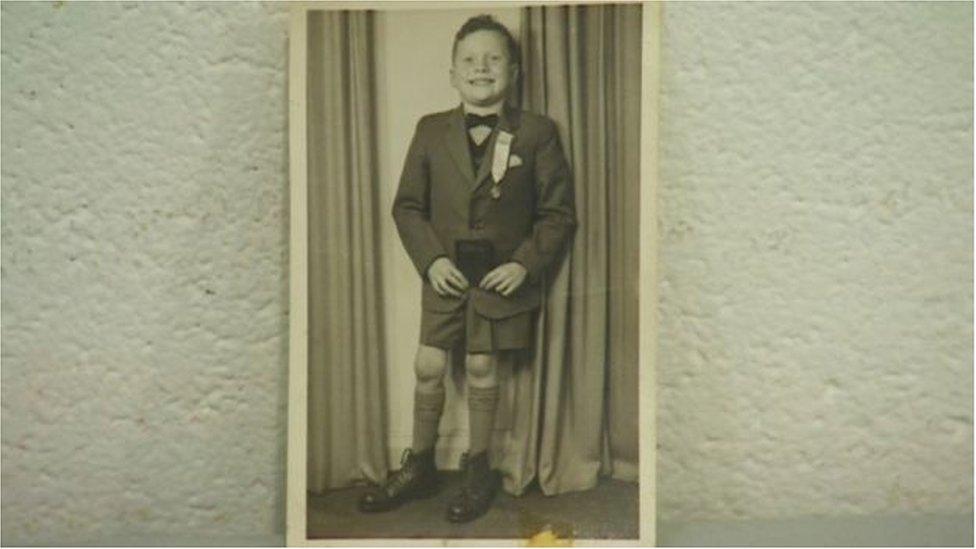
Eddie McCrory on the day of his First Holy Communion
His father took him in the ambulance to the old fever hospital at Belvoir Park in Belfast.
"He promised he wouldn't leave me, but he did," said Eddie.
"I was put in isolation for six weeks. There were three of us with polio in a room. The doctors and nurses came in wearing masks and all gowned up, it was frightening."
His father came to look in at him through the window.
"Completely paralysed"
"I cried when I saw him. 'You promised me you wouldn't leave me, but you did. So you go away!'" I told him.
His mother visited too, but when she saw him, she burst into tears and couldn't stop crying.
A nurse took her aside and told her she'd have to stop weeping and smile.
"I was completely paralysed for those six weeks," he said.
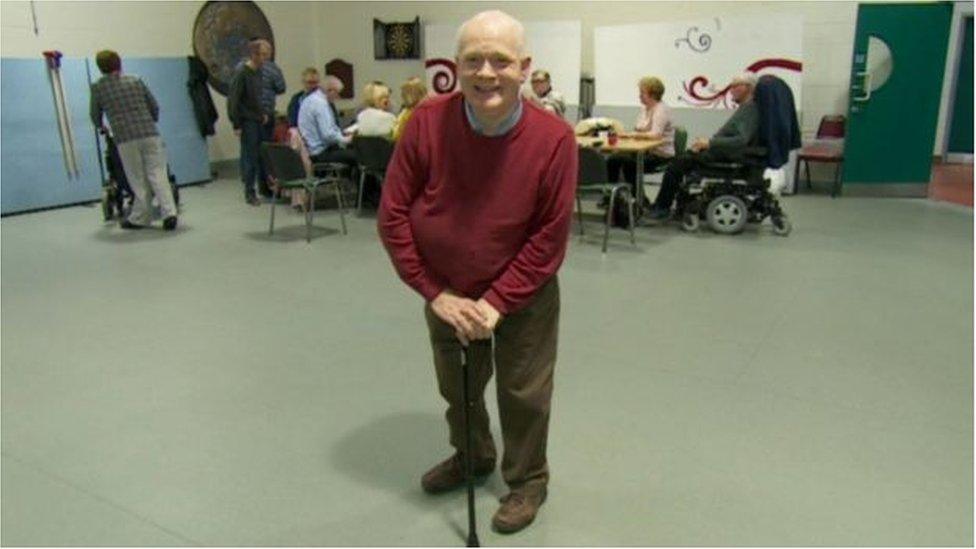
Eddie McCrory in 2020
"I remember a wasp got into the room and I could not move a muscle. I was petrified. I screamed, but I couldn't lift my hands to put the sheet over my head."
This was in the days before mobile phones. Many people did not have a landline to keep in touch with family.
The local newspaper let people know how a patient was surviving.
"When you went in with polio, you were given a patient number," said Eddie.
"Each night, a list of patient numbers would appear in the Belfast Telegraph and beside each number would be a grade on a scale from 1 to 5 - to report how critical you were.
"My mother gave my patient number to aunts and uncles and that was how they checked on how I was doing."
Limited and restricted
After six weeks in isolation, he was transferred to Greenisland Hospital where he spent almost a year.
"I remember the hydro pool and the hospital school.
"Visits were limited and restricted."
It was a long year - he came out wearing two sets of callipers and a brace on his back.
At night, he had to sleep entombed in a plaster cast.
That went on for the following two years and he struggled to walk again - falling and ending up in plaster casts with chipped bones on a number of occasions.
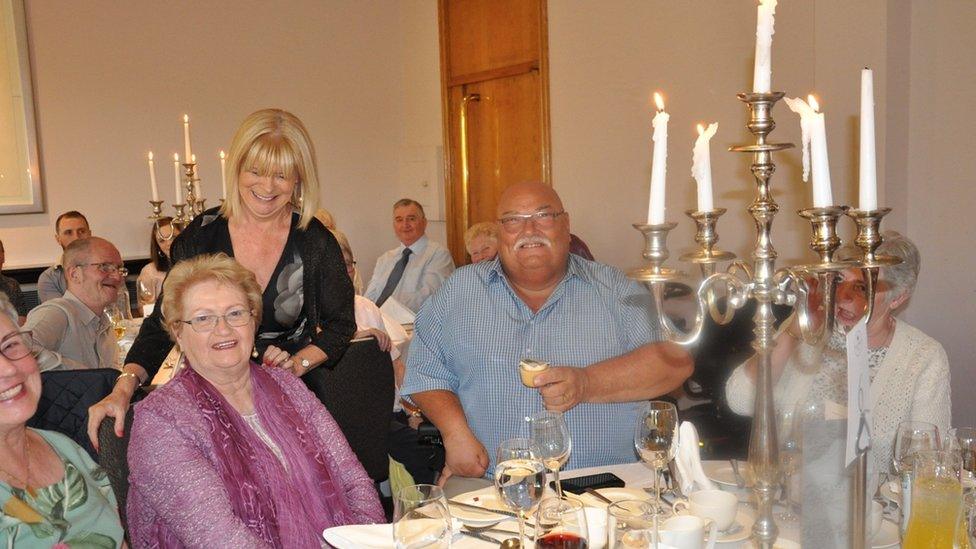
Joe McVeigh pictured in the centre
For many of the members of the NI Polio Fellowship being separated from loved ones was their childhood.
Joe McVeigh was born in Belfast but now lives in Crossgar.
He got polio at just five months old and spent the first six years of his life in Belfast's Musgrave Park hospital, then transferred to St Joseph's Hospital, Westmeath.
Visits twice a year
He was 16 years old when he went home for good.
He remembers very little of Musgrave: "I was very little and I do remember hiding under the bed when they were coming around to do school lessons," he said.
He could not walk and had two callipers and a back brace connected to them.
St Joseph's Hospital was an orthopaedic hospital and people came and went. There were a few patients like him from Northern Ireland who were there long term.
"My parents came to see me twice a year, that was all they could afford," he said.
"My father was a labourer. To visit me, he had to hire a car and stay overnight and come back up the next day. "
Polio Fellowship
The years went by. It was his life.
"When I was 14 or 15, I got home for the summer holidays. But up to that I had never been at home. To me, that was strange. I was nearly institutionalised."
When it was all over, it took time to get used to living with his family.
"I'd been used to sleeping in a ward with a lot of others - first the children's ward, then the adults' ward. I had not been used to being around girls like my sisters."
In the current crisis, hearing people talking about the problems of self isolation and seeing people rush to buy food, he wonders why.
"I don't understand or believe the panic," he said.
"My message to people is that they will get through it."
Eddie and Joe are members of the Northern Ireland Polio Fellowship.
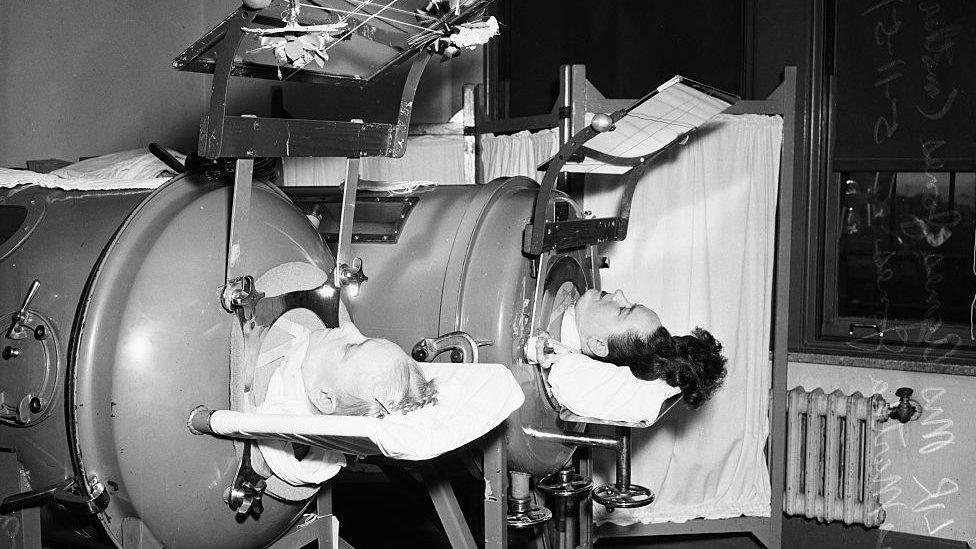
Polio patients in the breathing apparatus known as "the iron lung"
Now, many of them are self-isolating.
Eddie says that they have their own WhatsApp group to boost their morale.
"Twenty-five of us took part in an online pub quiz last weekend. We keep each other's spirits up.
"I got a message the other day that said: 'There really is no problem with self-isolating. But how come one of my bags of rice contains 6,729 grains and the other has 6,731?"
People who had polio had to work for years to reclaim their limbs and their movement. You didn't just recover, stand up and walk away.
Eddie's message for all those facing the horrors of the coronavirus is one of resilience - a reassurance that this too shall pass, from people who have lived long and faced hard times.